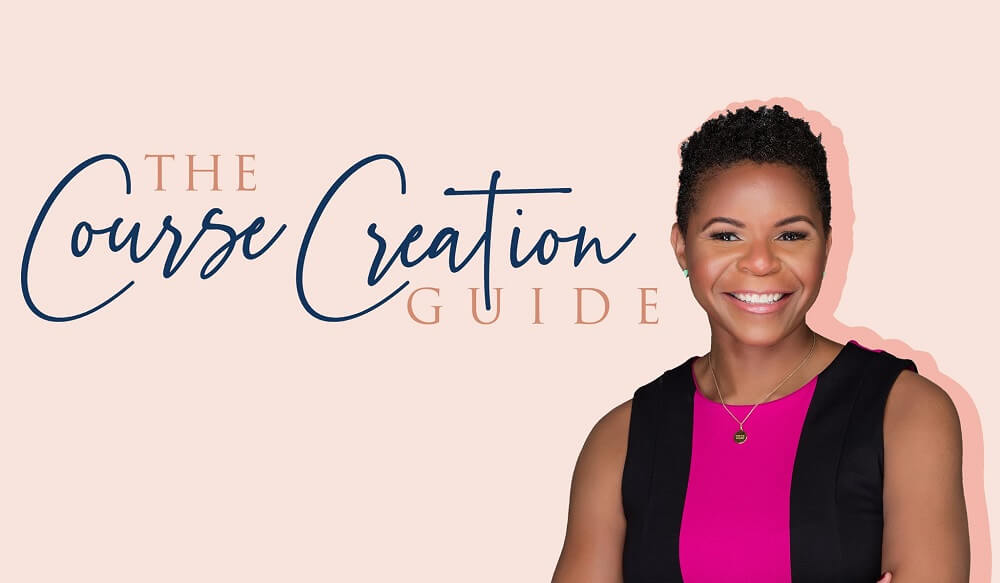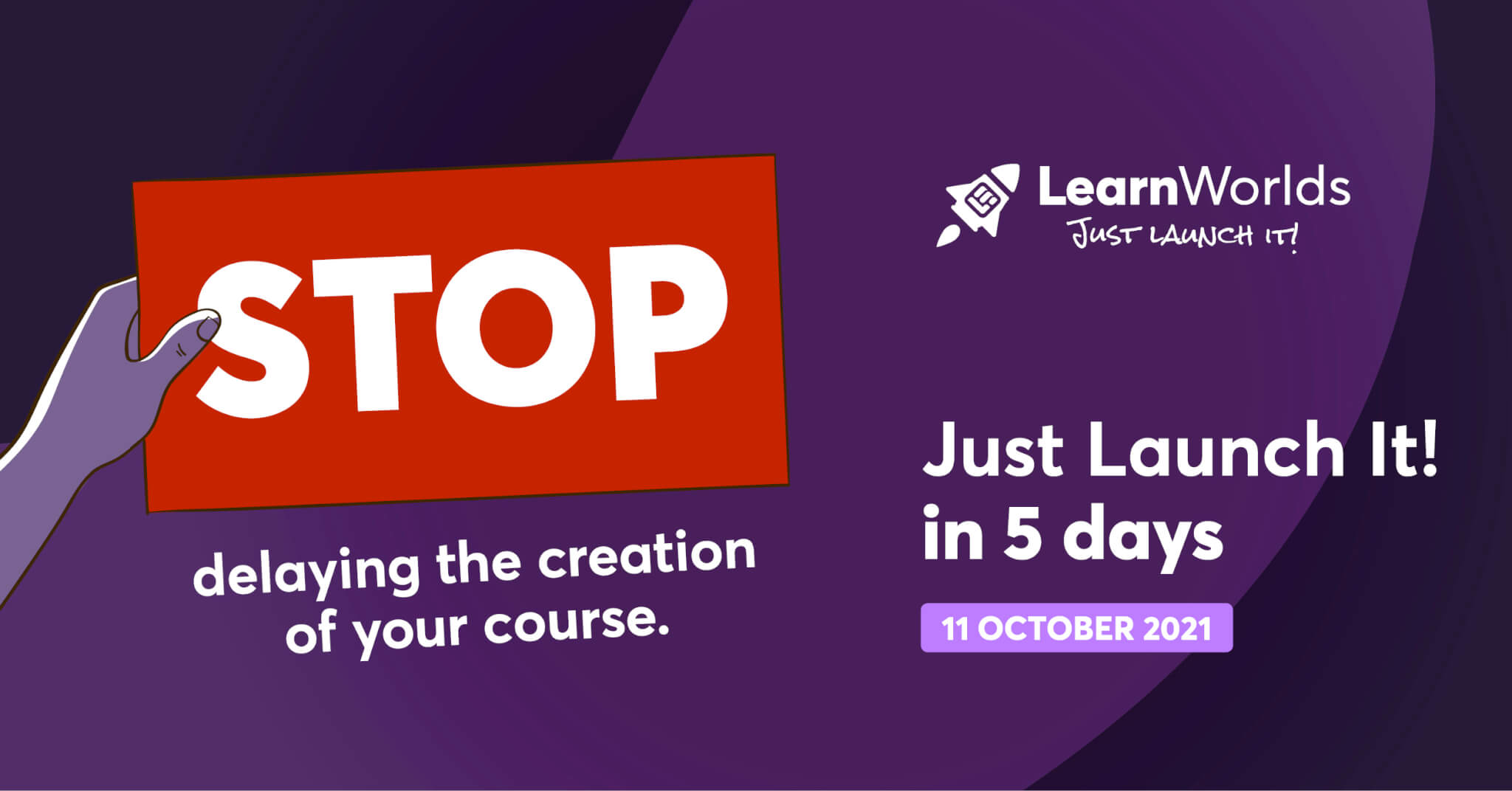Table of Contents
There has never been a better time to create and sell online courses.
According to Global Market Insights, the elearning market which was at 250 billion in 2020, is now expected to reach up to a trillion in 2027. The rapid growth of online learning and its increasing demand during Covid-19, along with the evolution of online education technology has been a major catalyst for this.
But, while this is exciting news for aspiring course creators, only a few will tell you how to break into the industry and become one. And, that’s exactly what we are doing here at LearnWorlds.
To help you achieve your dreams, we have compiled a list of valuable tips and advice on how to create online courses that will come in handy once you start creating your course.
So, what does it take to create successful online courses? Let’s find out!
Tip #1 – Validate Your Course Idea
While the demand for online learning and online courses keeps growing, it is too risky to assume that your course idea will be an immense success before doing any preliminary research.
Digging into the data and testing your course idea before you are ready to offer it to potential learners is vital. This is not only going to help you see whether people will welcome your online course with open arms but mostly check out if your course topic will resonate with them and offer the solutions they are searching for.
To validate your course idea, you will need to go through three important steps:
Validating your course idea will help you make an informed decision on the product you are planning to create. This is the best way to ensure it is going to be valuable to your target audience.
Just like Jen Ahaghotu – Coach and Founder of The Course Creation Guide, says:

Tip #2 – Focus on the Learner
An online course has a very distinct purpose, and that is to take learners from point A to point B. To do this as a course creator you will need to offer the knowledge and guidance they need to succeed. While this is a great way to make money online, you shouldn’t forget about what your users are expecting.
However, it is important to think about how you will deliver the course to achieve this.
As personalized approaches to learning are gaining momentum, it is important to apply instructional methods that will help learners learn better and get the most out of the course. Each learner will have their own strategies and tips for productivity, but it would be perfect if your course can still provide them the best result.
Technology is your best friend at this, as it has the power to provide student-centric as opposed to teacher-centric learning and tailor the course content in a way that meets the needs, strengths, and interests of each of your learners.
Allowing learners to go through the course at their own pace, creating a community around learning, and allowing them to have a say in the learning process are some ways you can provide that personalized learning experience. You could also have a high-quality helpdesk to assist students with problems and any difficulties they might face. Your helpdesk needs many features to work well, so it’s a good idea to do some research into what should be added for the best user experience.
Tip #3 – Think About Learning Objectives
A successful course is a valuable course. And, if you want to offer real value you need to pinpoint down the learning objectives.
Setting out the learning goals and objectives helps to give a sense of direction. The more clear, specific, and detailed these are, the better for you and the learners since they can help them decide whether this is a course they will benefit from in the long run.
Learning objectives allow you to stick to a plan and organize the course content with learning activities and assessments that help learners achieve certain learning outcomes.
These are measurable and effective because they show learners what they can expect to learn once they complete your course and allow them to reflect on their progress.
Tip #4 – Create a Killing Course Outline
Once you decide on the learning objectives, it is time to work on your course outline.
An outline helps to keep your course organized following a logical order of the course content that goes in there and the timeline it needs to follow. It also divides the course into sections making it easier to manage and consume by learners.
Instead of throwing out course content, make sure you have a rough idea of what you want to cover in your course.
Charlotte Beasley – Content Strategist at Content Chiefs, shares some spot-on advice:
You can either organize the course by sections – Section 1, Section 2, Section 3, by chapters like a book, by week – Week 1, Week 2, Week 3, or in an essay-like format – Intro, Main, Conclusion. Alternatively, you can divide it by modules or content type – e.g. PowerPoint presentations, webinars, podcasts, and so on.
The choice is all yours, and there is no right or wrong when creating a course outline.
Need some inspiration? Check out these 18 amazing course outline templates.
Tip #5 – Add Interactivity
The importance of adding interactive elements into your learning is summed up perfectly through Jeff Cobb’s words – the Founder of Learning Revolution:

We are living in a digital age, and because of that, learning is at the risk of becoming a passive experience rather than an interactive one.
To make sure that your learners are going to stay engaged throughout the course, you need to add some level of interactivity into your instruction that will prompt them to interact with you and the learning content.
Encouraging learners to complete video quizzes where they get to answer questions or click on the video to resume the learning process and offer their own input, for example, are some things you can try out with LearnWorlds.
Tip #6 – Give Something for Free
Offering parts of your course – or a mini version of your course for free, is a great way to get learners signed up for the real deal.
You may think it is counterintuitive, but if you really want to boost those enrollment rates, an incentive that has no cost attached to it is the best way to go. Not to mention – it helps with building brand awareness and authority in your industry.
Digital downloads or lead magnets such as checklists, templates, ebooks, PDF guides, worksheets, training videos work as great incentives that can show a sneak-peak of your course, and get them to take further action, e.g. completing fun quizzes and challenges.
As Sue Keogh – Founder at Sookio advises:
Once they see real value in the free course, checklist, or ebook you have created, more people will want to join and encourage others to do the same.
Tip #7 – Build an Audience List First
An excellent way to ensure that your course will be a success is to start building your target audience list or list of prospects right away.
Course creation is not merely content creation and you will still need to market your online course through all the right places.
Having an audience that you can rely on and promote your course as early as possible will boost the chances of getting learners onboard your course. The best way to do this is through email.
Email marketing starts with an email list of subscribers who are interested in what you offer and they become your biggest supporters. These are the supporters who will try out your product and then share a winning testimonial on your sales page to convince others to do the same.
Also, don’t forget to use social media. Having a YouTube channel and being active in LinkedIn and Facebook groups can help you build an online community before launching your course.
Tip #8 – Let go of the ‘Perfect’ Course
One thing you should know as a course creator is that there is no such thing as the perfect or ‘best online course’. There are only courses that offer high educational value or low educational value and that should be your key priority when designing your course.
The pressure to create something good is real and the thought of sharing your course with the rest of the world sounds intimidating, but you shouldn’t let this get to you.
Striving for the best in anything you do is an excellent strategy to follow, but it becomes unproductive when it is making you too conscious or anxious. Many course creators have second doubts and are often trapped in a perfectionist mindset because of it.
Our solution? Just launch it without stressing too much about potential mistakes.

Tip #9 – Invest in the Best Equipment
Course videos are excellent student engagement tools as they help to deliver key learning concepts easily. If you are planning to create educational videos for your online course, you will need the best tools and equipment that you can find.
Apart from a computer and an internet connection, you will also need a webcam, a microphone, a video editing tool – e.g. Camtasia, that will help you edit your clips, and some basic lighting equipment that will give you the best lighting effects in the video.
The best way to start is shooting an intro video that doesn’t need as much equipment, to begin with, and can help introduce yourself or give a summary of your course.
Just as our customer, Co-Founder, and CTO of Infinity Campus – Philip Wogart, says:
To create high-quality videos, you need to pay attention to the minor details, but those details will set you apart from the competition.
Check out our online course on how to choose the best video equipment, to create amazing video experiences!
Tip #10 – Run the Course
You won’t be able to tell what your learners will experience through your course unless you go through the process yourself.
So, before you are ready to click the ‘Launch Course’ button, run multiple tests of your course to see if everything runs smoothly.
Check if your course misses out on anything important, or content-wise has any spelling or grammar mistakes, any empty sections that need more learning activities or assessments, or whether the videos are working properly.
If you need help, you can always ask your closest friends or family to give you their feedback.
Create Online Courses With LearnWorlds
There are tons of online course platforms, course marketplaces, and learning management systems (LMS) that can help you build courses, but there is only one that is right for your online business.
LearnWorlds gives you all the tools and resources you need to succeed as a course creator and entrepreneur.
From creating your course to promoting and selling it to your target audience, LearnWorlds is here to guide you through the entire journey!
Ready to Monetize Your Knowledge?
To learn how to create your own online courses, you need to gain the know-how behind content creation. Once you have your course idea, you get to organize and develop your course material, course outline, lesson plans and take it from there.
If you don’t know what your course is going to be about yet, check out our top trending course topic ideas for 2021 to get some inspiration and find out where all the learners are.
Before you go, don’t forget to read our comprehensive step-by-step guide on online course creation that will help you build an entire course from the ground up.
Ready to create your first course?
Get your free 30-day trial with LearnWorlds today and find out how you can offer the best learning experiences to your learners!
Kyriaki is the SEO Content Manager at LearnWorlds, where she writes and edits content about marketing and e-learning, helping course creators build, market, and sell successful online courses. With a degree in Career Guidance and a solid background in education management and career development, she combines strategic insight with a passion for lifelong learning. Outside of work, she enjoys expressing her creativity through music.


